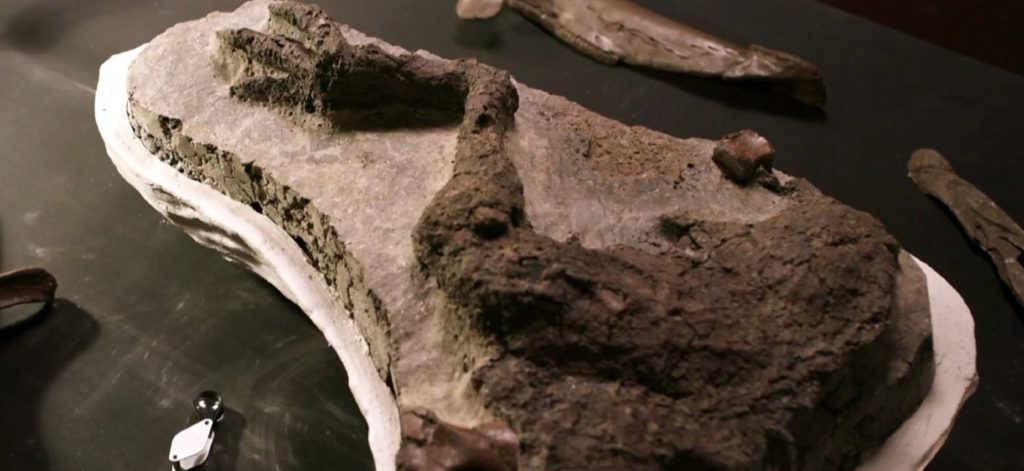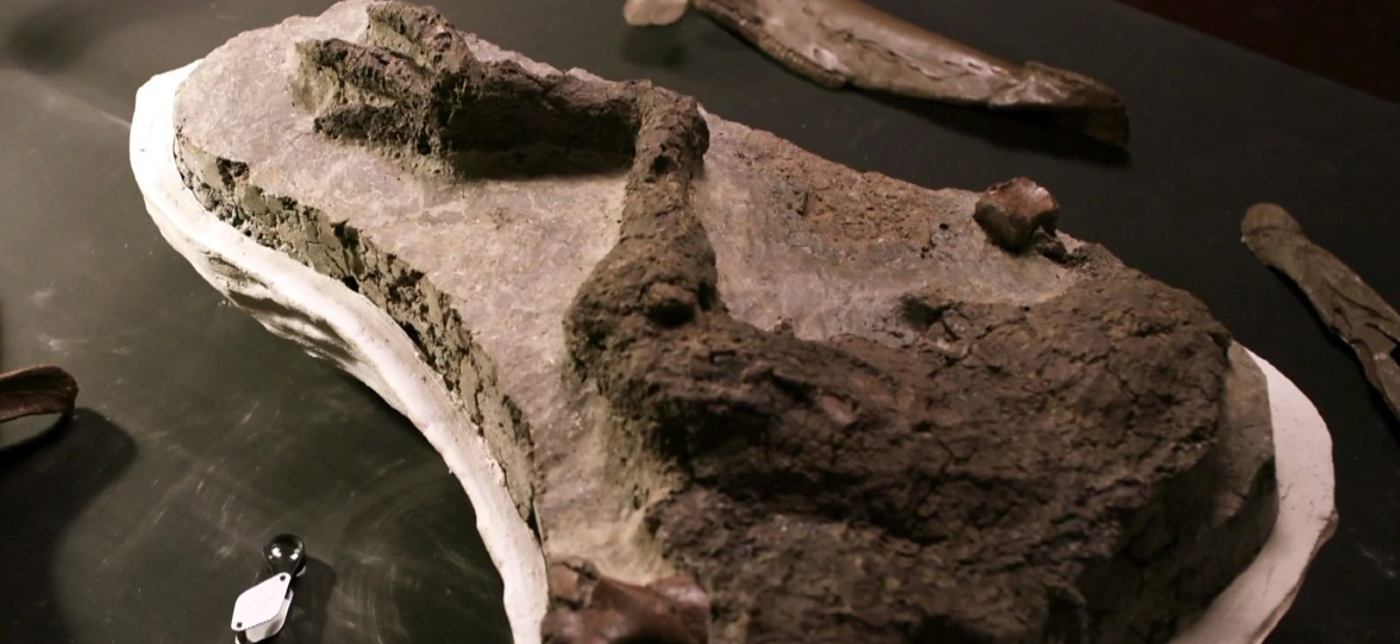
As we all know, 66 million years ago an asteroid struck the Earth, causing a worldwide extinction of the dinosaurs.
Now a dinosaur mass grave is revealing the crucial details of the global cataclysm, as scientists believe they have found evidence of its exact moment.
Among the finds are dinosaurs that suffered what appear to be grave, near instantaneously-inflicted injuries; there are fish and other aquatic animals mixed up with the land-dwellers, a fossilized pterosaur embryo, a sea turtle that has bizarrely been impaled by a wooden stake, and even what paleontologists believe to be a shard of the asteroid itself.
“We’ve got so many details with this site that tell us what happened moment by moment, it’s almost like watching it play out in the movies. You look at the rock column, you look at the fossils there, and it brings you back to that day,” Robert DePalma, the University of Manchester grad student who leads the Tanis dig, told the BBC, who are featuring a special documentary hosted by Sir David Attenborough called Dinosaurs: The Final Day.
The Tanis dig refers to Tanis, North Dakota where the site was found. The hypothesis of the overall happenings preserved by the fossils is that a water surge created by earthquakes following the impact struck Cretaceous North Dakota, and that this was the cause for the chaotic mess of animal bodies.
Armageddon, as near as makes no difference.
Cretaceous North Dakota was actually the site of a large inland sea, and a massive upsurge in the water level would have devastated the surrounding environment.
MORE: Map Lets You See How Your Hometown has Moved Across 750 Million Years of Continental Drift
UC Berkeley described Tanis as a “fossilized graveyard” of “fish stacked one atop another and mixed in with burned tree trunks, conifer branches, dead mammals, mosasaur bones, insects, the partial carcass of a Triceratops, marine microorganisms called dinoflagellates and snail-like marine cephalopods called ammonites.”
To consult on the site, DePalma called Walter Alvarez, a UC Berkeley Professor who 40 years ago first described the meteorite impact hypothesis.
“…We have this magnificent and completely unexpected site that Robert DePalma is excavating in North Dakota, which is so rich in detailed information about what happened as a result of the impact,” Alvarez said. “For me, it is very exciting and gratifying!”
MORE: Dinosaur Unearthed in Argentina Could Be the Largest Animal That Ever Walked the Earth
One of the calling cards of the impact were tiny spherules of molten rock called tektites embedded in the gills of sturgeon and paddlefish found at Tanis. The tektites were catapulted into the atmosphere by the size and force of the meteorite, before setting down across the Western Hemisphere. As they reached bodies of water, they were clearly inhaled by the fish.
The tektites chemically and radiometrically match those recovered from the impact crater on the Yucatán Peninsula.
“We were able to pull apart the chemistry and identify the composition of that material. All the evidence, all of the chemical data, from that study suggests strongly that we’re looking at a piece of the impactor; of the asteroid that ended it for the dinosaurs,” explains Professor Phil Manning, who is DePalma’s PhD supervisor at Manchester. “It’s absolutely bonkers,” he said to BBC Radio 4’s Today program.
The BBC hired several independent experts in various specializations of dinosaur examination to try and verify the claims that these deaths were caused directly from the meteorite impact.
As is widespread in paleontology, there is a serious skepticism about the claim, but some of the hired experts told the BBC that some of the finds—the pterosaur egg in particular, are so wonderfully unique that whether their deaths were completely connected to the impact is, at the moment, of minor importance compared to the astonishments of the discovery itself.
(WATCH the BBC video for this story below.)
LET Exciting Discoveries Like This One Strike Pals; Share this Story…





















Gee, sounds like good proof for a world-wide deluge, too, and far less speculation! Just believe wht is in front of your eyes!